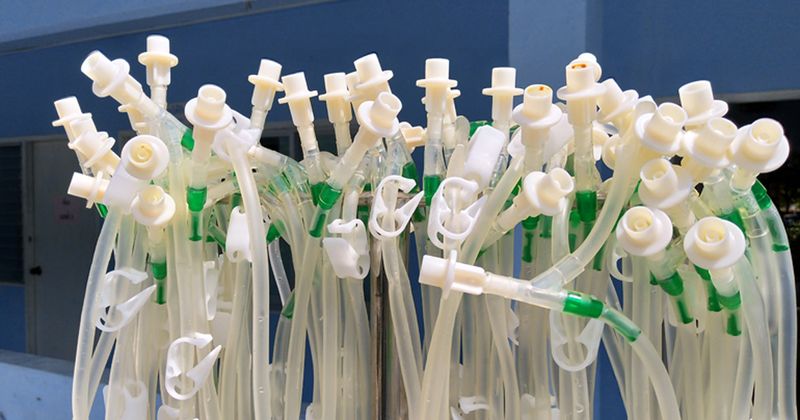Study finds no difference in mortality based on vascular access type for hemodialysis
A retrospective study conducted in Belgium found neither catheter nor arteriovenous access was associated with survival in patients on hemodialysis.
This led researchers to suggest the worse outcomes commonly observed with catheters might be due to other patient factors, rather than the dialysis access itself.

“In general, it is accepted that the infectious risk of dialysis catheters outweighs the cardiac risk of AV fistulas or grafts,” Dieter De Clerck, MD, of Universitair Ziekenhuis Brussel, and colleagues, wrote. “Hence the policy on vascular access in hemodialysis patients is to promote the use of an AV fistula or graft, unless there is severe heart failure, access induced limb ischemia or a limited prognosis.”
However, they noted the European dialysis working group (EUDIAL) has recently proposed a patient-centered approach instead of a fistula first policy in older patients (though the approach still encourages use of AV fistula in most cases).
Furthermore, Belgium and Europe frequently use dialysis catheters, with a decreasing trend in AV fistula use, according to the researchers.
Contending that the complication rate with catheter use varies, with “large differences in catheter related bloodstream infections” documented in medical literature, De Clerck and colleagues sought to compare patient outcomes according to the vascular access type at their institution, a center they wrote sees “very little infectious complications from catheters.”
Included in the study were 374 patients who initiated hemodialysis between 2007 and 2016. Of these, 82.6% initiated treatment with a catheter (62%, temporary catheters; 38%, tunneled cuffed catheters), while 17% initiated with an AV access (majority with fistula; just one patient initiated with graft).
During a mean time of follow-up of 2.1 years, 74% retained their initial vascular access type, 11% were transplanted and 42% died. The most common causes of death were cardiovascular (31%), infectious (23%), malignancy (8%), the decision to stop dialysis (6%) and hemorrhage (5%), with the researchers noting one death was suspected of being caused by a catheter infection.
Further findings indicated that while there was no difference in mortality between patients who initiated dialysis with an AV access vs. those who initiated with a catheter (HR for mortality in patients with an AV access = 0.98), patient age, a history of congestive heart failure and active cancer at dialysis initiation were independently associated with a higher mortality rate.
Researchers noted that peripheral vascular disease and congestive heart failure were more often present in the group of patients who initiated with a catheter.
“Our observational single center study may add some interesting elements to the already existing literature on vascular access and mortality,” they wrote. “The added value of our study consists of the detailed information on the vascular access of the patients during their entire follow-up, as opposed to most studies where only information on the vascular access type at start of the study is available, and what happens afterward with vascular access is ignored.”
While the researchers still recommend AV access when possible, they contended that catheters are a viable option for patients with a limited prognosis or a relative contraindication to AV access.
“In these patients,” they concluded, “a tunneled catheter might be a worthy alternative.”
